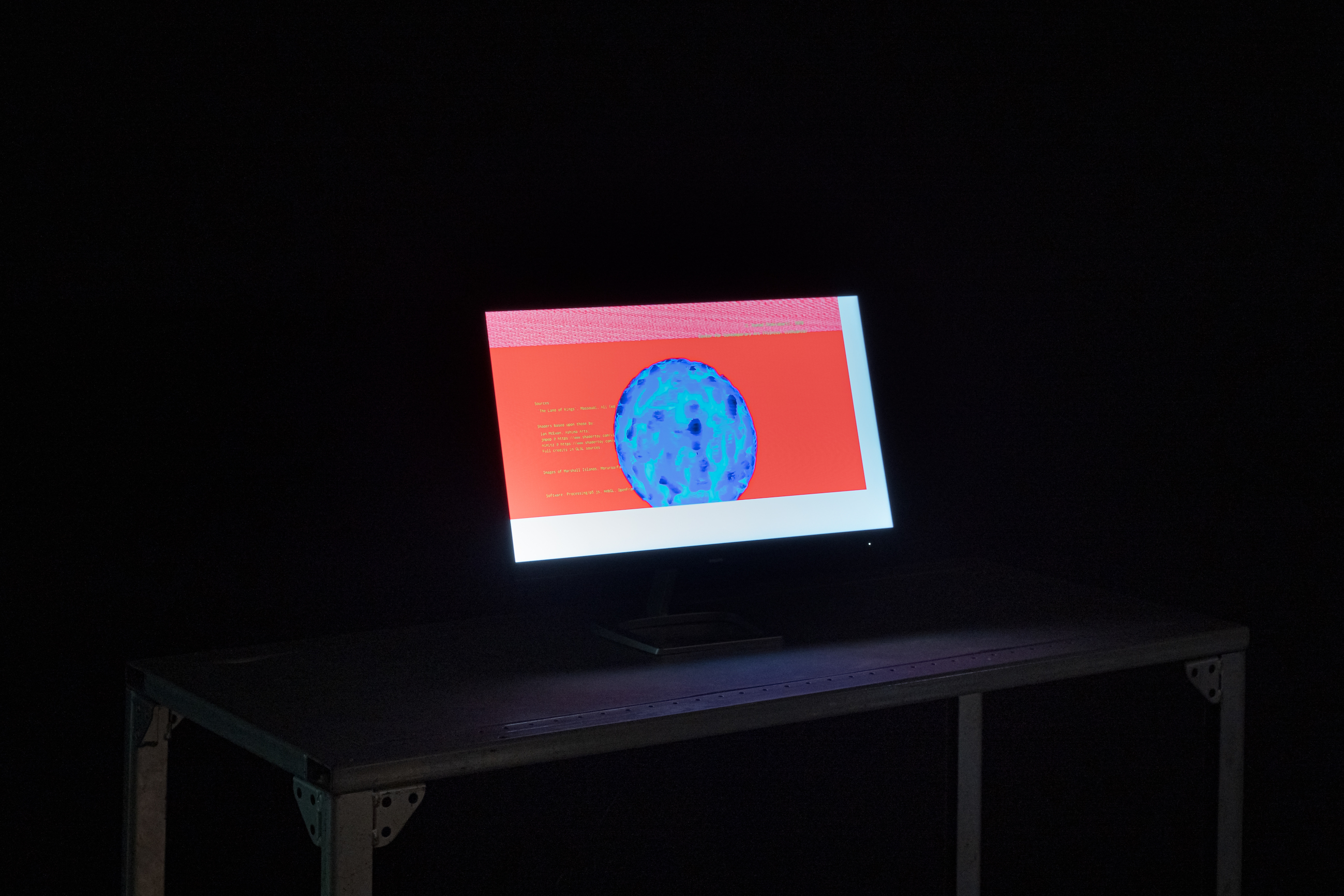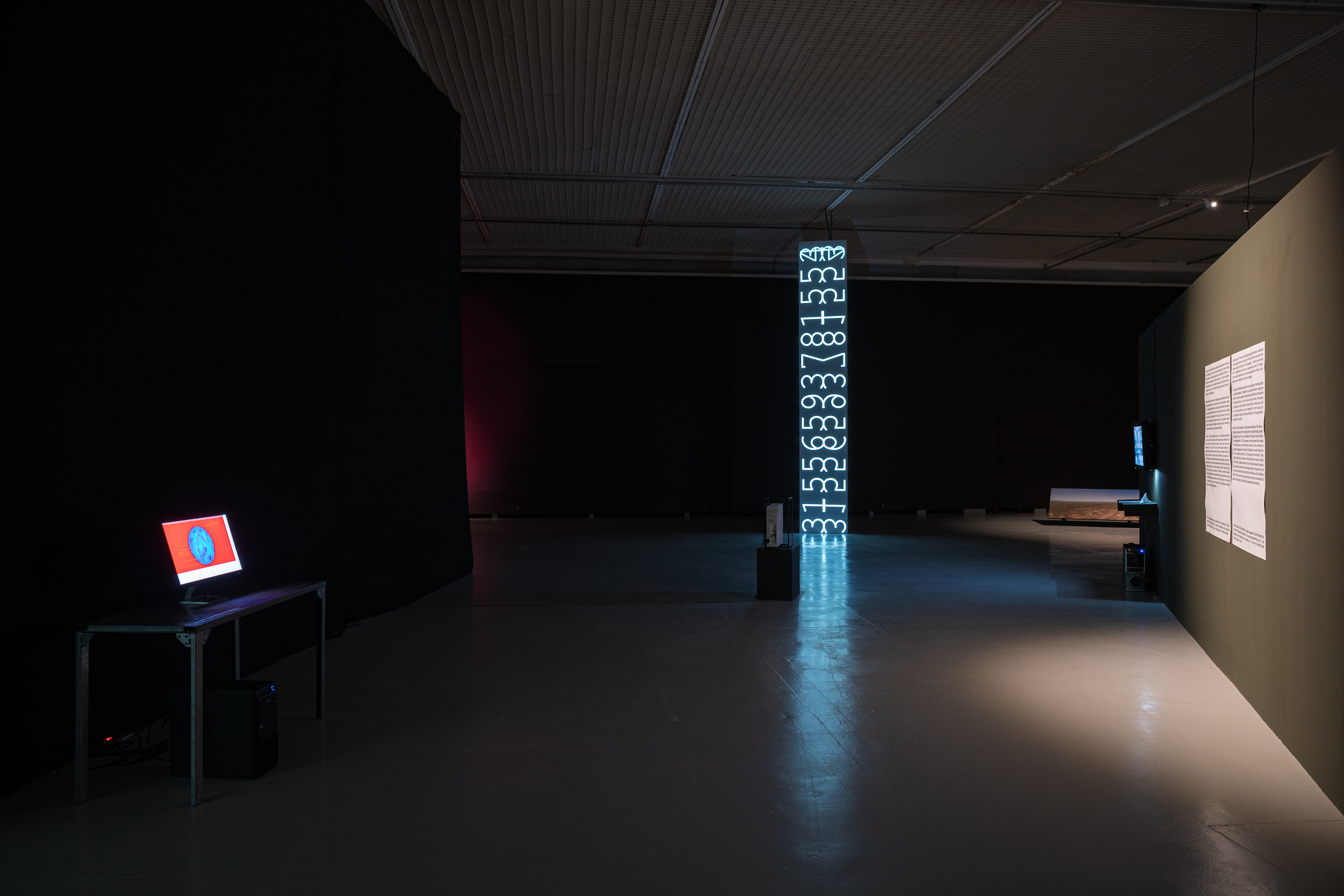ESTHER
Contemporary Art Center (Vilnius, Lithuania), curated by Ele Carpenter and Virginija Januškevičiūtė
18 September 2020 - 25 October 2020


Stuxnet Background
The Stuxnet cyberweapon infected computers worldwide in 2010, but appears to have been specifically targeted at the Iranian uranium enrichment facility at Natanz. Uranium enrichment is the process of separating the isotope U-235 (suitable for a simple fission weapon) from U-238, more commonly-found in ore, using spinning centrifuges through which flow both isotopes in the form of uranium hexafluoride gas. These somewhat fragile and hard-to-operate centrifuges are controlled by off-the-shelf software known as a Step7 SCADA, made by Siemens and running on Windows-based computers.
Stuxnet was a dormant piece of code that spread rapidly through Iran's computer networks, seeking machines that ran both Windows computers and the Siemens SCADA. When it found both, it would 'come alive' and send commands that caused the gas centrifuges to malfunction and eventually self-destruct. A complex piece of software, it was designed to operate stealthily, even during its active phase, erratically 'glitching' the centrifuge operation, such that operators couldn't easily diagnose why they were malfunctioning. It is thought that the size and sophistication of the Stuxnet code would be difficult for a non-state actor to achieve. Approximately 1,000 centrifuges were destroyed, or about 10\% of Iran's enrichment capacity at the time.
Notably, Stuxnet was one of the first large attacks against commonly-found industrial computers, and indeed a Russian nuclear power plant may have been infected by Stuxnet, albeit without a radiation incident. Stuxnet, intentionally or otherwise, also legitimised cyberwarfare against non-military targets: in 2020, Iran and Israel each allegedly launched tit-for-tat attacks on the other's water supplies and shipping ports.
Like biological pathogens, computer viruses are dependent on networks: telecommunications systems but also human carriers (the individual who introduced the USB stick at Natanz, or anyone who opens a phishing link in an email), and interconnected economic systems (the Step7 is German, Windows is American, while the P-1 centrifuges are a Pakistani design stolen from a Dutch design bureau). Social practices and community hygiene also play a part: security managers strive to create an 'air-gap' between critical military or civilian computer networks and the internet-at-large (which can however be breached by physical means, as in the Stuxnet case).
From Iran's perspective, Stuxnet also opened a digital front in an overt and covert campaign of foreign interference that long pre-dates the current Islamic Republic. Iran, by virtue of geography and hydrocarbons has been a site of contention: from the humiliating Russio-Persian treaties of Gulistan and Turkmenchai (1813/1828); to the Anglo-Russian Convention (1907) which carved up Persia into spheres-of-influence; to the deposition of the democratically-elected Prime Minister Mossadegh in an Anglo-American-assisted coup d'etat (1953); and the convoluted Iran-Contra arms affair (1985). In turn, knowing it is militarily outmatched, it has developed an effective brand of asymmetric warfare: a 'bricks-and-mortar' approach of semi-aligned, highly mobile and deniable militias that operate across the Middle East. A curious strategic tension results, that constrains all parties but is inherently unstable.
This simulation displays archival images which are algorithmically glitched and degraded during the run of the exhibition and beyond, highlighting the contingencies specific to network-based durational media. These follow in the tradition of experimental cinema: mutating depending on the time/location of the viewer, and thus resistant to a subject's perception-in-entirety, at least within an institutional exhibition context.
The work's opacities recall both the position of the Iranian scientists, who were initially baffled by the virus' erratic behaviour, and perhaps even the creators of the virus, who were apparently surprised at its escape from Iran and infection of computers worldwide.
Software Work in Institutions
I was interested in what software can do, particularly in an institutional context. Not so much in the formal possibilities of code or browser art, per se, but as a sort of dynamic, responsive, ever-mutating successor to the essay film. So images, sound, text, data from the world that is processed and put back out as something new.
One formal interest was the viewer's relationship with the code work. A visitor and the work he/she is looking at (and indeed, the institution itself), all exist in very different temporal contexts. The moving image in particular makes unique demands on a viewer's time; painting and sculpture could be said to embed a notion of elapsed time, but maybe that is a rather specific Fried-ian reading? Anyway, most viewers perhaps spend seconds or minutes with an artwork. Therefore, the artwork, like all things, has an existence, in time, of its own - but cannot be perceived in entirety by a given viewer. In the case of ESTHER, its existence is quite literal, in that it changes continually and repeats (if at all) with a very long period.
There are certain viewers who do have a more complete view - say the curators, but also museum guards and other staff. They might see the same work several times, they might see viewers interacting with the work, in a sense the employees inhabit the work most completely. I was reminded of that Jeff Wall photograph of the Barcelona Mies van der Rohe pavilion that Fried analysed at length, specifically of the (brown?) window cleaner's relationship to the sparse glass Modernist building.
A slightly different take comes from Boris Groys (see some really rough notes on 2019 e-flux 'Art After Culture' symposium), who proposes museums as places where the passage of time is enacted, now that they (a) have so much stuff that they can almost never show (including digital accessions), and (b) are under constant, and perhaps sometimes conflicting, political pressure: provenance, de-colonisation, presenting work in such a way as to not offend sensitivities of the latest vocal interest group. In connection with my AGI/emulation/transhumanist interests, I thought of a 2019 video co-produced by Groys' protege Anton Vidokle 'The Dead Walk into a Bar', which featured humans as the exhibits in the museum curated by an AGI (see a review written for The New School).
Lastly, there are spatio-temporal aspects that arise in network-based art. In an age of social media, artworks (like many other things) exist as much in their 'real' physical space as they do in a re-mediated, re-transmitted online context. In this work, I tried to make it have behaviour that the physical museum visitor couldn't access directly (i.e. has to be seen through a browser outside museum hours). This, in itself, brought up problems that are quite cutting-edge in network design today - how to synchronise time across geographically dispersed locations? This is a real problem in games with thousands of players. How do we ensure players have the same experience at the same time? Boffin-interest aside, these questions get close to what the Metaverse is all about, more here.
In an art context, does a collective experience matter - do we view art alone, lost in contemplation, or do we do it together, checking out the other visitors in the gallery? Or something in-the-middle, weirder, voyeuristic Thomas Struth-like thing?